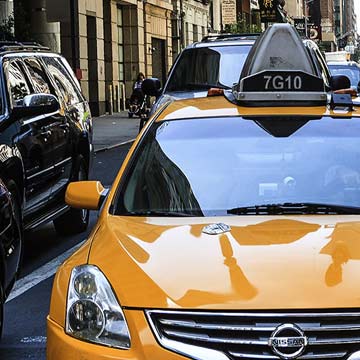A Key Case on Gun Control
Headline Legal News
Dick Heller, a longtime resident of the District of Columbia, carries a handgun for his job as a private security guard. But at the end of his shift, he packs up the .38 revolver and stashes it in a vault. He would like to keep a gun for protection at his Capitol Hill home, where he has endured the sound of gunfire for years. But he can't, because D.C. law forbids it. "They give me a gun to protect them," he says of the government, "but I'm a second-class citizen when I finish work."
One of the most restrictive gun laws in the country, the D.C. statute is the focus of a March 18 U.S. Supreme Court hearing that marks the most significant case on gun control in decades. With Heller as plaintiff, it is the first test since 1939 of whether the Second Amendment supports an individual's right to bear arms and not just a state's right to form a militia. It is a crucial distinction. A ruling in favor of the individual right could trigger a wave of constitutional challenges to gun
control laws nationwide. And it could suddenly bring a volatile issue—one particularly uncomfortable for Democrats—into play during a presidential election year.
"It's significant because either it's going to fuel attempts to restrict gun ownership or it could put a constitutional wet blanket on any effort to control gun ownership," says Martin Redish, a constitutional law professor at Northwestern University.
For all the passion on both sides of the Second Amendment debate, the Supreme Court has said remarkably little over the years about to whom the right applies. Specifically, the amendment states that "a well regulated Militia, being necessary to the security of a free State, the right of the people to keep and bear Arms, shall not be infringed."
For most of American history, courts have interpreted the Second Amendment to apply to the collective right of states to assemble groups of armed citizens, such as the National Guard. Nine federal circuit courts have upheld that position, and the Supreme Court favored it when it last considered the issue in the 1939 case. (While that decision upheld the federal regulation of an individual's use of sawed-off shotguns, it didn't directly address the scope of the Second Amendment.)
Related listings
-
Notable California Trials
Headline Legal News 02/29/2008Childhood abuse Award: $11,000,000 Six female former parochial school students alleged sexual molestation by a lay teacher at their elementary school (Confidential v. Archdiocese of Los Angeles, Los Angeles County Superior Court, Plaintiff attorney: ...
-
Bar association moving to first permanent location
Headline Legal News 02/22/2008The Hillsborough County Bar Association will hold a grand opening for its new offices on Feb. 27. The Chester H. Ferguson Law Center, a 17,000-square-foot facility located at 1610 N. Tampa St. and adjacent to Stetson University's College of Law in Ta...
-
Virginia Bar president considers attorney trust audits
Headline Legal News 02/21/2008The president of the Virginia State Bar is proposing random audits of lawyer trust accounts.Lawyers use trust accounts to temporarily hold real estate proceeds or retainers until they are disbursed to a third party or -- once a fee is earned -- to th...

Any contracts or any transactions can go awry at any time
We know your business means a lot to you and want to understand all the aspects of your business so that we can help you in the best ways possible. We don’t discriminate depending on the size of your company. Our mission statement is to represent all business owners and entrepreneurs by navigating them through the rough waters of business litigation and guiding them to success.
We are attorneys who want to make sure we understand your business objectives and goals before we start providing you with legal counsel individualized to your business. We know what it means to be dedicated to your business. After all, we are a business as well. And just like you, we want to provide the best service we can to our clients.
Any contracts or any transactions can go awry at any time. Sometimes, making important business decisions without legal help from business attorneys could cost you your business.We don’t want you or your business to be misconstrued by anyone. Our attorneys make sure that we communicate with you often to make sure we are giving you the legal guidance you need at all times. We make sure we are responsive in a timely-manner with every single one of our clients to help them identify risks and prevent legal battles before they arise.

